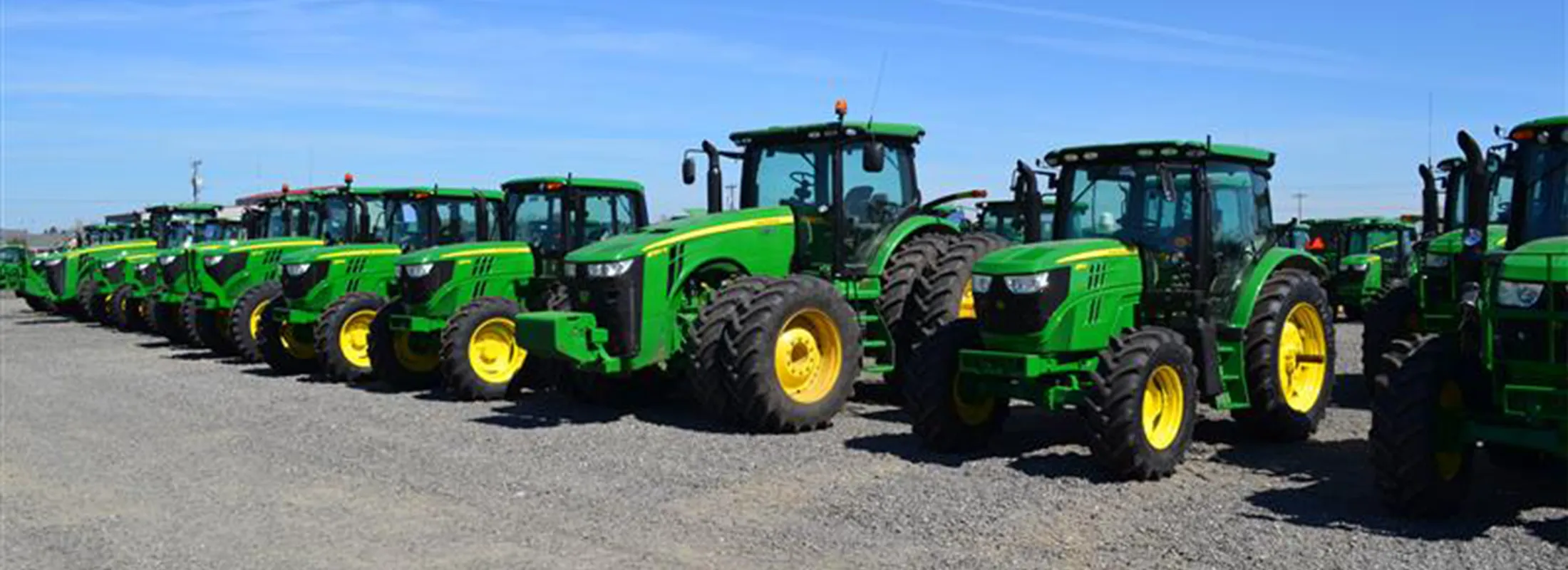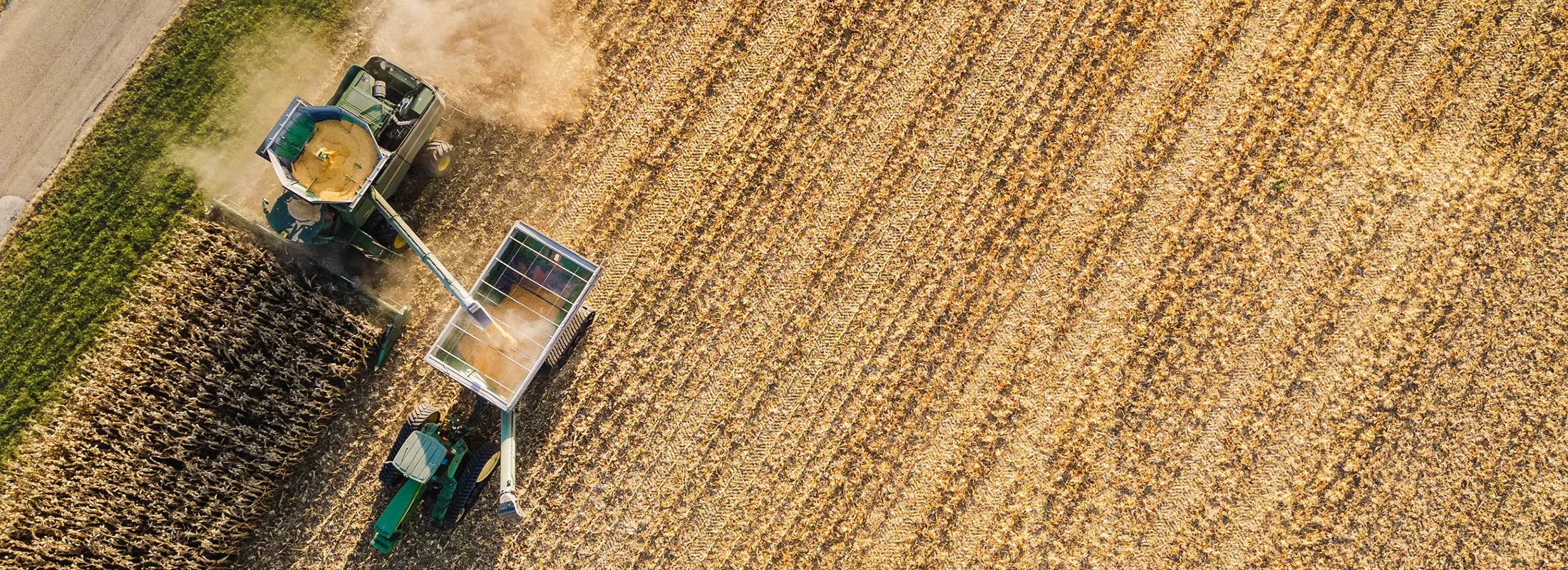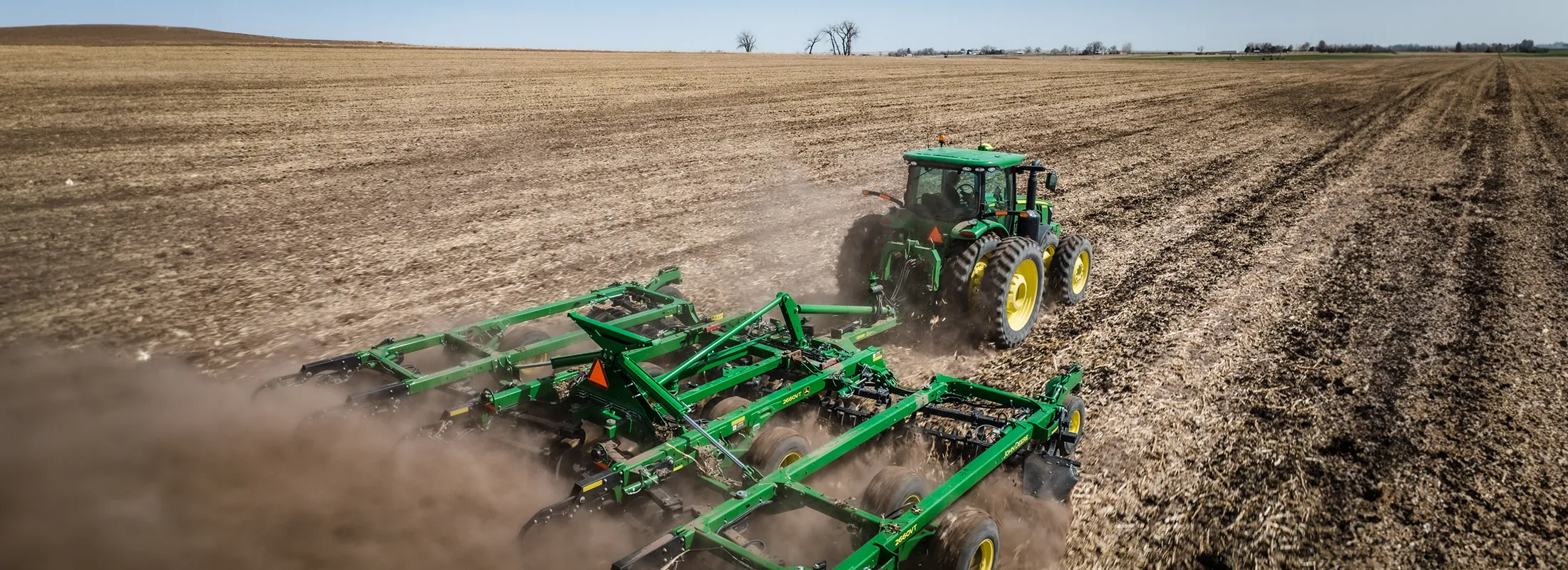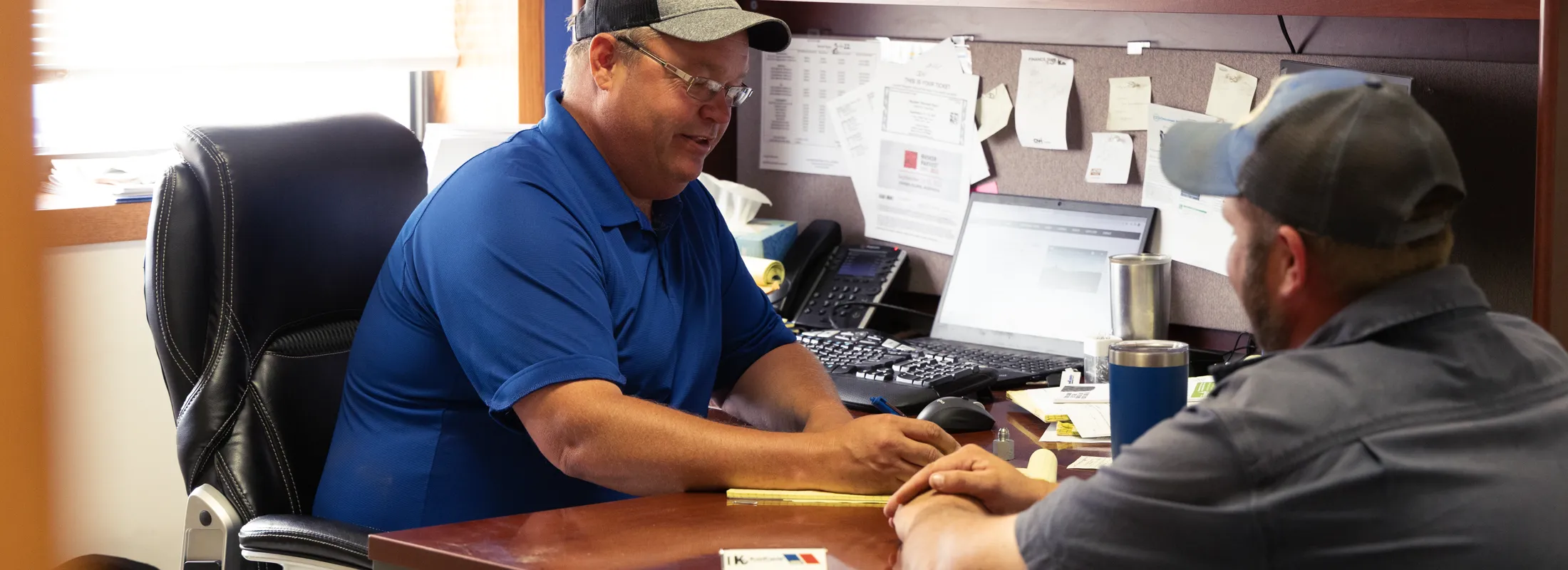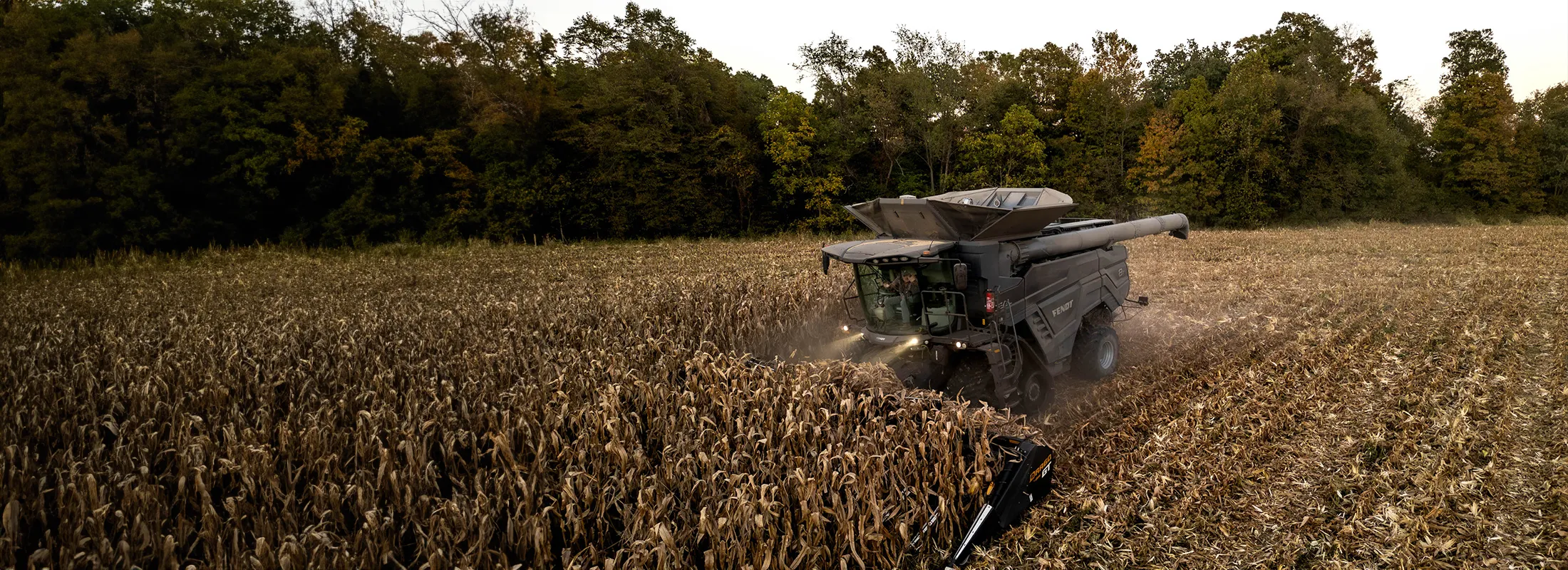There are many ways to measure the financial health of your farm. In times when margins are tight, the operating expense ratio is a key indicator that can paint an accurate picture of not only how your business is performing, but what adjustments can be made to operating and input costs.
“Operating expense ratio is one component among several that we use to measure an operation’s efficiency and profitability,” says Michelle Bowen, vice president of AgDirect credit underwriting. “Understanding the operating expense ratio helps you evaluate how efficiently you are using your assets. It also allows you to benchmark against industry peers, giving you a gauge of your day-to-day profitability.”
Calculating operating expense ratio
To calculate your operating expense ratio, start by identifying your total operating expenses, excluding interest. These expenses typically include items such as seed, fertilizer, fuel, labor, and equipment maintenance or repairs.
Next, subtract depreciation from this total. Depreciation represents the reduction in value of your assets over time due to wear and tear or obsolescence, such as the gradual decline in the value of machinery.
Finally, divide the adjusted operating expenses by your gross income. The result is expressed as a percentage, revealing how much you spend to generate income and providing a clear snapshot of your operation’s financial performance.
Operating Expense Ratio = (Operating Expenses - Depreciation) / Gross Revenue
Why it’s important
Why is your operating expense ratio important? When approaching a lender for financing, this ratio is one way to show your operation’s financial stability and can influence how much it will cost you to borrow money to sustain your operation.
An optimal operating expense ratio is typically between 60% to 80%, with lower percentages indicating greater efficiency. However, this range can vary based on regional differences, farm size and production type, as each operation has distinct cost structures. In addition, land rent is included in this calculation, so operations with a high percentage of rented land will typically experience a higher expense ratio.
“An operating expense ratio around 65% is a desirable range that sets producers up for success,” shares Bowen. “For corn and soybean operators, the standard is typically between 70% and 75%. However, with current market conditions, 80% is more typical of what we’re seeing today.”
The agricultural economy’s cyclical nature adds complexity to maintaining a healthy operating expense ratio. Inflation and higher interest rates have driven costs to higher levels than in previous cycles. These pressures highlight the importance of closely monitoring financial metrics and preparing for inevitable fluctuations.
“There’s often a lag between operating costs and commodity prices. While commodity prices may drop quickly, operating costs take longer to adjust,” Bowen explains. “Once we get through that lag, we typically see conditions improve, but having adequate working capital is pivotal in these moments to ride out the peaks and valleys.”
What to do if it’s too high
If you do find yourself with a higher operating expense ratio, it should signal action to improve your operation’s cost efficiency. Bowen recommends producers start by examining their largest cost categories.
For conventional row crops, Bowen points to fertilizer, chemicals and seed as the primary expenses, followed by fuel. “Since these costs make up such a large portion of total expenses, they also offer the biggest opportunity for savings,” she says. “Negotiating contracts or making early purchases can help secure better pricing.”
“Labor is another component to consider, and it can exacerbate costs depending on where you’re located and whether your crops require more labor-intensive work,” Bowen adds. “Irrigation and energy costs are other significant factors, particularly as energy prices have spiked dramatically in recent years.”
Strategies for controlling costs
Another way to offset high operating costs is by diversifying income sources. For example, some producers have turned to contract livestock production, such as hog farming, to leverage resources like manure while generating additional income.
High operating costs often coincide with rising living expenses, which can add pressure to the operation’s overall financial health. Bowen encourages producers to evaluate their personal and family budgets to identify areas for potential savings.
Equipment costs also play a significant role in high operating expense ratios. In addition to controlling costs with leasing, sharing equipment or selling underutilized assets, Bowen suggests exploring options like custom planting or harvesting.
“By using custom services, you avoid the upfront investment in equipment and the ongoing costs of maintenance and repairs,” she says. “The tradeoff, of course, is timeliness. You might not be able to harvest or plant exactly when you want to, but it’s a viable way to control costs.”
Consolidation of smaller operations to cover more ground with the same equipment line is another potential strategy. This approach maximizes asset utilization and spreads costs over more acres, ultimately lowering per-unit expenses.
The lender’s view
If you choose to prepay expenses for the next production cycle within the current calendar year, your operating expense ratio might temporarily reflect a higher figure. This happens because your income statement will show increased expenses for this period.
If that is the case, don’t worry; lenders typically look at the ratio on a year-over-year basis. That means if your expenses are high because you’ve prepaid to capture discounts on things like seed and fuel, you won’t lose financing flexibility because of those increased expenses.
“We pride ourselves on looking beyond a single year when evaluating an operation,” says Bowen. “If a producer has been in business for multiple years, we take a broader view to capture both the highs and the lows, providing a more accurate average.”
“It’s important for producers to remember the operating expense ratio is just one piece of the puzzle,” she continues. “In situations where a high operating expense ratio occurs during a period of favorable market conditions, it may raise more concerns than it would in challenging times.”
Other key financial metrics
While the operating expense ratio is an important measure of financial health, it’s most effective when considered alongside other key financial metrics. One such metric is the term debt coverage ratio, which evaluates the level of term debt in relation to a farm’s production value.
“If 75% to 80% of a farm’s costs are operating and input expenses, that leaves 20% to 25% as margin. Making sure what you have in debt is relative to that margin is critical,” explains Bowen. “If your term demands account for 40% or more of what the operation generates, it’s an indication you may be overleveraged.”
Fixed cost ratio, which examines fixed costs such as land expenses and equipment on a per-acre or per-unit basis, is another form of measurement.
“Analyzing fixed costs at this level gives a more granular understanding of input costs or cash rents,” Bowen shares. “This makes it easier to evaluate the costs of owned versus rented land and negotiate rents based on those comparisons.”
By incorporating additional metrics alongside the operating expense ratio, producers can gain a comprehensive view of their operation’s financial health. This holistic approach enables more informed decision-making, improved risk management and long-term profitability.



